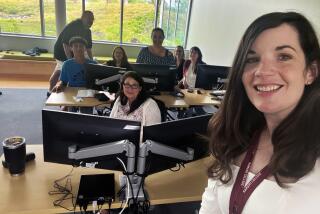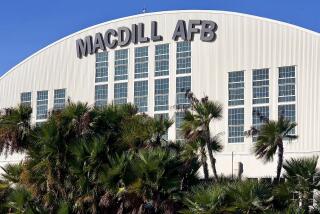Clue by Clue, Military Detectives Solve MIA Mysteries in Asia
HONOLULU â A lab tucked within the tidy grounds of Hickam Air Force Base near Pearl Harbor is a storehouse for the sorrow still felt by thousands of military families.
Arranged on the tables are partial skeletons and bone fragments belonging to military personnel still unaccounted for in World War II, the Korean War and the Vietnam War. The pieces wait for scientists to determine who they were, and which families might reclaim their loved ones.
The remains from Southeast Asia represent the work of a Hawaii-based military task force that scours the jungles, hills and fields of Vietnam, Laos and Cambodia to solve the mysteries of what happened to the 2,104 Americans listed as missing in action there.
âThereâs a sense of satisfaction more than anything because itâs nice to be able to see some closure,â said Theresa Woltanski, a forensic anthropologist who analyzes the bone fragments. âSome families have been waiting for a long time.â
The approximately 180 members of the Joint Task Force-Full Accounting are detectives sifting through documents, interviewing witnesses, analyzing sites and excavating areas seeking scant clues hidden under the earth for decades.
Take the case of an F-4 fighter jet that crashed in 1972 behind a Vietnamese rice field near Tuyen Quang City, killing the two men aboard. Investigators drained part of a pond and sifted through about 700,000 pounds of dirt to uncover bone fragments, a restored tooth, part of a sleeve and a quarter-size piece of an oxygen mask.
Those pieces ultimately were traced to a 28-year-old Air Force captain.
Investigators usually donât find intact sets of remains in Southeast Asia because of bombings, high-speed crashes and the acidic soil. Instead, they must gingerly search areas for the most meager of clues, relying on information from witnesses who may have buried bodies more than 30 years ago.
âSometimes weâre hopeful because we have good leads and other times weâve had cases where weâve had to investigate four, five, six times and donât have luck getting information,â Air Force Staff Sgt. Bill Sibley said.
The concealed clues can be difficult to get to. They may be submerged in a rice paddy or on a remote cliff accessible only by a carefully landed helicopter. The land also can be peppered with unexploded shells and mines. Most of the time crash sites have been scavenged by locals in search of metal.
The task force at Camp H.M. Smith near Honolulu consists of personnel from all four military branches. A small corps stationed in Thailand, Vietnam, Laos and Cambodia helps coordinate the missions.
Since the task force was formed in 1992, it has conducted more than 2,400 investigations. So far, 165 sets of remains have been identified and about 350 have been recovered but not yet identified.
A team working in Vietnam last month investigated 36 cases and excavated seven sites.
âWe use a lot of persistence,â said Dick Hites, chief Vietnam analyst for the task force. âWe go back again and again and again until we come to a point to recommend a site.â
If a site is recommended for excavation, the task force makes a second trip abroad. Local digging crews carve out the soil, and every bucket is sifted through screens that trap objects as small as the eyelet of a boot.
It can take weeks to find any clues.
âYou shake the screens for 10 hours a day,â Air Force Tech. Sgt. Thomas Thompson said. âYou do that for 21 days before you find something, and Iâd say you get frustrated sometimes.â
In some cases the work yields clues but no biological evidence, making it impossible for analysts to make an identification.
After two excavations of the site of a 1965 F-4 crash in Phu Yen, Vietnam, investigators recovered pieces of a microphone, part of the planeâs survival kit and an identification plate from the airplane that promised to verify the fliersâ deaths.
But the bone fragments and a dental prosthesis did not provide enough information to biologically identify the two men, an Air Force captain and lieutenant. They remain unaccounted for.
Non-biological items recovered from operations are sent to a lab at Kelly Air Force Base, Texas. The biological evidence is flown to the U.S. Army Central Identification Laboratory at Hickam.
Dental records make it possible to match teeth to missing servicemen within two months. Other cases based only on bone fragments can take more than two years to solve, Woltanski said.
The final identification takes years of research, days searching for a site and weeks of digging. If the first effort fails, a second effort can follow.
âI think itâs nice not to be forgotten,â said Lt. Col. Robert Temple, a forensic dentist.
More to Read
Sign up for Essential California
The most important California stories and recommendations in your inbox every morning.
You may occasionally receive promotional content from the Los Angeles Times.










